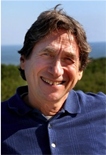Green Music Returns to Confront Atomic Energy
Aug 3, 2011
Green Music Returns to Confront Atomic Energy
Amidst a life-and-death struggle to finally shut the nuclear energy industry, the power of green music flows again this Sunday.
It's also pouring over the Internet, as the historic all-day MUSE2 gathering is staged at the Shoreline Amphitheatre south of San Francisco, re-uniting Bonnie Raitt, Jackson Browne, Crosby-Stills-Nash, the Doobie Brothers, John Hall, Sweet Honey in the Rock and many more who'll sing to benefit victims of the Fukushima disaster and promote a green-powered Earth.
The concert runs from 3pm through the evening Pacific Time and comes as the nuclear power industry desperately seeks federal funding to build new reactors while fighting a tsunami of citizen opposition demanding the shut-down of aging radioactive power stations.
Music has been a unifying, empowering force for social movements for decades. The labor union movement used it during strikes and solidarity marches. It was at the heart of the most powerful campaigns for civil rights. A whole generation's demand for peace in Vietnam got electrified with rock and roll.
And yet another round of citizen activism against nuclear power has been put to music from the grassroots and the sound stage, including that of Musicians United for Safe Energy.
The first MUSE was formed after the 1979 melt-down at Three Mile Island. For five nights Raitt, Browne, CSN, Hall, the Doobies, Sweet Honey were part of an astonishing galaxy of stars that lit up Madison Square Garden. The shows were accompanied by a massive rally at Battery Park City that drew 200,000 people and featured the likes of Bruce Springsteen, James Taylor, Carly Simon, Peter Tosh and many more. (Battery Park City is now the site of one of the nation's largest solarized urban developments).
A three-record album followed that went platinum, along with a Warner Brothers feature film called "No Nukes."
In the wake of Three Mile Island, MUSE and a huge upwelling of grassroots citizen opposition, the corporate push to build atomic reactors shriveled and died. For three decades the industry went moribund, with virtually no US construction of new reactors.
Thanks to citizen action, the thousand nuclear reactors Richard Nixon promised for the US by the year 2000 became just 104.
But those decaying, radioactive death traps are under increasing citizen pressure to finally shut. Many are near major earthquake faults. Some two dozen are virtual clones of Fukushima Unit One, now spewing radiation in the air and sea around Japan.
The lead shut-down fight now is in Vermont, where the state legislature has voted to deny Entergy the ability to run the Yankee reactor after March, 2012. The vote stems from a contract signed by Entergy with the state giving it the power to shut the reactor if it chooses.
But Entergy is now in court trying to overturn the deal it made, arousing fury throughout New England, even among mainstream commentators. Entergy has gone so far as to order more than $60 million in fuel rods meant to keep the reactor operating after the 2012 deadline, intensifying the anger of the region.
Meanwhile, fueled by wads of radioactive cash, the nuclear lobby has come back to Congress demanding taxpayer subsidies. Omitted from the recent budget deal, it's widely expected the industry will try to insert into a Continuing Resolution or some other legislative vehicle a loan guarantee program forcing taxpayers to underwrite new reactor construction.
Along with aid for the people of Japan, opposition to that and other nuclear subsidies are at the core of MUSE2. Grassroots nuclear opponents from all over the country will be tabling at Sunday's concert, which will also feature an eco-village organized by long-time benefit promoter Tom Campbell. The Shoreline Amphitheatre is the nation's largest green-certified concert venue.
In person or on line, we'll see you there on Sunday!

